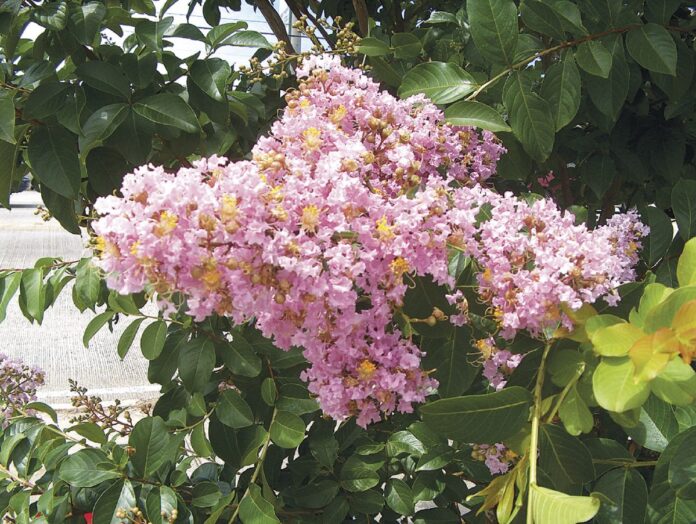BY LORI MURRAY
Local Crape Myrtles have been putting on a show recently and providing us with outrageous shows of color, so I was especially interested in learning about a crape myrtle that is one of the Texas A&M Superstars for 2016. Basham’s Party Pink Crape Myrtle, introduced in 1965 by Texas Nursery Professional Mr. Lynn Lowery, has been tested all over the state to earn the Superstar designation.
It does well in zones 8 and warmer, can be single or multi-trunked, and produces large soft lavender-pink flower clusters at the end of its branches. The flowers stand out on its dark green foliage, and can be used indoors in floral arrangements. The tree can be quite spectacular in full sun as it can reach 20-30 feet in height and from 2/3 to a spread as wide as the tree is tall. This variety shows some resistance to pests and has a lower propensity for seed pods than other varieties. The bark and trunk were highly touted – “fluted smooth bark exfoliates in shallow plates to expose predominantly light tans, gray, and silver gray bark with some reddish brown undertones” – and one of the suggested uses was using lighting to highlight it in nighttime landscape displays, even in your own backyard.
Crape Myrtles are deciduous and are best planted in fall or early spring here, but if they are already established in containers or ball-and –burlap, they can be planted at any time. Just remember to keep them wet (but not standing in water) until they have adapted to their new environment. They are also tolerant of all but very alkaline soils, so some of us in the Lower Rio Grande Valley may have to amend our soil to grow them successfully. Plant them in full sun for optimum flowering and be sure they have good ventilation. Avoid direct spray on foliage especially if your irrigation water is salty. Water them during the establishment phase and in severe drought. The aggie horticulture website below will provide a chart of crape myrtle varieties by size and name, and a video about pruning for repeat bloom. Like Vitex, the pods need to be removed to facilitate additional flowering.
SOURCES:
http://aggie-horticulture.tamu.edu/datebases/crapemyrtle
www.bexarmg.org/three-new-super-stars-for-2016




